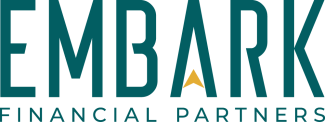
9 Best Tax Planning Moves for Business Owners
As a business owner, you possess a unique advantage when it comes to taxes. The tax code is built for owners. You can employ various strategies to minimize your tax liability while maximizing your financial gains. You can strategically plan both your personal and businesses taxes, which leads to significant impacts on your lifetime tax burden. This requires a shift from a short-term tax savings mindset to a long-term mindset of what saves the most in lifetime taxes. The less tax you pay over your life means more income and growth in your business. So what are these tax planning strategies? Here are 9 of the best tax planning moves for business owners that benefit your business and your bottom line.
1. Establish a Business Retirement Account:
Business retirement accounts are a great way to either defer tax when you are in higher income years (pre-tax contributions) or pay tax today at a lower rate with the expectation that you will be in a higher tax rate in the future (Roth contributions). A few of the best retirement accounts that accommodate this are:
- Solo 401(k) – for solo business owners or only employee is their spouse. Allows Roth and pre-tax contributions. Allows employee deferrals and employer contributions. For individuals under 50, the maximum employee deferral (Roth or pre-tax) is $22,500 in 2024.
- 401(k) – for business owners with multiple employees. Allows Roth and pre-tax contributions. Allows employee deferrals and employer contributions. For individuals under 50, the maximum employee deferral (Roth or pre-tax) is $22,500 in 2024.
- SEP – for people with few employees who are lower income. ONLY employer contributions are allowed.
Not only do these accounts help for retirement and be strategic for taxes, but they are also great for retention and incentivization of employees. If you don’t have a retirement plan through your business, tax credits are currently available to cover the expenses of starting a plan.
2. Choosing the Right Business Entity/Tax Status:
Choosing the entity structure and how you want your business to be taxed is not a decision you are stuck with once you start your business. As a business owner, you have the capability to change your entity and tax structure as your business evolves. Selecting these requires thoughtful planning because getting this right can be the difference in lots of tax savings. Whether it's a sole proprietorship, partnership, S corporation, or C corporation, each entity type has its own tax implications. An LLC is an entity option, but it’s not a tax status. As an LLC, you get to elect your tax status and choose one of the four.
For example - Once you hit a certain revenue level in your business, S Corp can start to make more sense. With an S Corp, you can pay yourself a reasonable salary and be subject to self-employment taxes (15.3%). With the increased tax savings of S Corp, you must understand this requires more work. Payroll, tax filing fees, etc. all come into the picture.
Another example – C Corps can make sense for one flat tax rate (21%). Or if owners plan to scall and sell and want to receive QSBS (to avoid capital gains tax). With QSBS though, you have to be a C Corp for about 5 years pre-sale.
I have another blog where I dive into finding and optimizing the right entity structure in much greater detail.
3. Maximize the QBI Deduction:
QBI stands for Qualified Business Income. The QBI deduction allows the self-employed and other small business owners to deduct up to 20% of qualified business income or 50% of wages (whichever is lower) from their taxable income. Since it’s deducted from taxable income, this allows you to lower the amount of income tax you pay. A huge benefit!
Optimizing the QBI deduction requires careful planning and consideration of various factors such as type of business, business structure, and income level.
- Type of Business – The QBI deduction formula depends if the IRS classifies your business as a Specified Service or Trade Business (SSTB). Limitations on the QBI deduction can apply if you are classified as an SSTB. Non-SSTB businesses receive the standard QBI formula.
- Business Structure – You must be a pass-through entity. This means sole proprietorship, partnership, LLC or S Corporation qualify for the QBI deduction. C Corps are ineligible.
- Income Level – In the standard QBI formula, taxable income thresholds exist. In 2024, taxable income under $191,950 for single filers and under $383,900 for joint filers can receive the full QBI deduction. If you are above this taxable income, phaseouts of the deduction start. Any income above $241,950 for single filers and $483,900 for joint filers and an SSTB receive no deduction. These taxable income thresholds mentioned above are indexed to inflation each year.
Knowing the structure and rules around QBI offer many options to maximize the QBI deduction. A few include deferring income, accelerating expenses, contribution to pre-tax retirement account, turning independent contractors to employees, and employing your spouse and children. These are ideas that scratch the surface.
Since QBI is one of the more complex strategies but also one of the most impactful in lifetime tax savings so coordinate with your tax planning team.
4. Hire Your Spouse or Older Kids:
When you bring on your spouse or older kids, you get two benefits. First, they can do different jobs or services you need around the business. Second, they start a string of tax planning opportunities.
If you hire your spouse or older kids and reasonably compensate them, their pay becomes a deduction to the business but then counts as income to them. However, with that income, they now can use your business retirement plan and potentially defer that income to put more away for retirement.
For your kids, technically $14,600 of income is tax free since that’s the 2024 standard deduction. Depending on how much time and work, this can lower your business profits and funnel income to your kids with very little tax. Additionally, with earned income, the kids can max out a Roth IRA early in life.
5. Donate to Charity:
If you are charitably inclined and have extra funds, charitable donations provide tax advantages that lower taxable income. Not only are you contributing to a cause important to you, but you are leveraging a way to minimize taxes. Mechanisms that can be used to reduce taxable income include donor advised funds, charitable remainder trusts, etc. If you are considering one of these mechanisms, it’s important to coordinate with your financial planner and tax professional.
There’s also donating highly appreciated securities to avoid capital gains tax and still receive a deduction. It’s imperative you donate these securities before selling. Otherwise, you’ll have to pay capital gains tax and receive a less impactful charitable donation deduction.
Since charitable donations fall under itemized deductions, a viable strategy many incorporate involves bunching donations every other year. This increases itemized deductions and leads to increased tax savings over time.
6. Spend Before You are Taxed:
This strategy is a fairly simple one but so impactful. As a business owner, many of the items you are buying or paying for that support operation and growth of your business get to be done pre-tax. These expenses lower your taxable income and allow you to be only taxed on what’s remaining. Deducting these expenses can lead to large tax savings.
A few examples of these expenses that come pre-tax:
- Computer
- Phones
- Phone bill
- Work travel
- Work related meals
- Home office expenses
- Educational and professional development expenses
- Work related vehicle use
Many others exist. Strategic spending can help lower your taxable income by allowing you to deduct eligible business expenses. Consider making necessary purchases, upgrades, or investments in your business before the end of the tax year to maximize deductions. Be sure to keep accurate records of your expenses to support your tax deductions.
7. Real Estate:
Real estate is a very tax advantaged asset class. Diving into all the details tax planning strategy with real estate will be discussed in another future article and requires a discussion based on your unique business.
To keep things on a high level, real estate has various tax benefits including depreciation deductions, bonus depreciation, mortgage interest deductions, 1031 exchanges (type of tax-deferred exchange of real estate property), qualified opportunity zones, and real estate professional status (REPS). All of these tax benefits require thoughtful planning and ensuring you meet the appropriate qualifications.
Whether it's owning your business premises or investing in rental properties, real estate can be a valuable tool in your tax planning strategy.
8. Roth Conversions:
For business owners, income can vary year to year. There are years you will invest more in your business and end up with lower income years. You may also have years where you live on one income, retire early, take less distributions, etc. and end up with lower projected taxable income.
In lower income years, Roth Conversions become a great strategy. Roth Conversions involve moving pre-tax retirement assets to post-tax retirement assets. The conversion allows you to pay tax at a lower rate than you would in the future. While Roth conversions incur immediate tax liabilities on the converted amount, future withdrawals from Roth accounts are tax-free, providing long-term tax savings if you expect to be in a higher tax bracket in the future or in retirement. Tax planning is all about paying tax at lower periods of time.
Beyond low-income years, another good opportunity to consider Roth conversions are in down market years. If pre-tax investment assets decline, that means less taxable income on a potential conversion to post-tax assets.
9. Use an HSA:
Health Savings Accounts (HSAs) are one of the best accounts and tax planning strategies allowed. Not all business owners have access to HSAs. However, if you are covered by a High Deductible Health Plan, HSA’s offer triple tax benefits for business owners and provide significant value to all income levels, especially high-income earners. Contributions to an HSA are tax-deductible (tax benefit #1), contributions can be invested and earnings within the account grow tax-free (tax benefit #2), and qualified withdrawals for medical expenses are tax-free (tax benefit #3). Maximizing contributions to an HSA can help you save on taxes while preparing for future healthcare costs. Keep receipts for all healthcare and medical related expenses in case you use an HSA down the line to cover those costs.
If you do not have HSA access, using an FSA also works to lower taxable income. Unlike HSA’s, FSA contributions cannot be invested and FSA’s are typically use it or lose it benefits. This means FSA’s cannot be rolled into the following calendar year.
Conclusion:
These 9 items all can help business owners optimize their tax strategies, minimize tax liabilities, and maximize financial opportunities. Knowing and implementing these tax planning moves is just the start of a sound tax planning strategy.
However, tax planning is complex and requires careful consideration of various factors. Make sure you have a strong team around you that takes out the right tools so you are not losing out on the lifetime tax game.
If you are in need of a strategic tax and financial planner for your business that collaborates with your trusted team, head over to our free consultation link and book a time with us! By proactively managing your taxes, you can ensure that your business remains financially healthy and prosperous in the long run.

